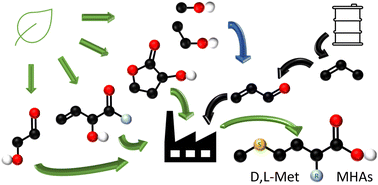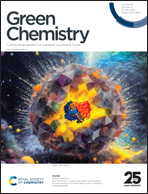Methionine and its hydroxy analogues: the paths toward their sustainable chemical synthesis†
Abstract
Methionine (Met) and its hydroxy analogue (MHA) are important components of a multimillion tonne scale commodity market of supplements used in human and livestock nutrition. Currently the industrial chemical synthesis of Met and MHA depends on petroleum-derived feedstock, such as propene. Additionally, the conventional synthetic methods involve dealing with highly toxic compounds, such as acrolein or cyanide. Substituting the conventional processes with new ones dependent on bio-based feedstocks, and involving safer chemistries, will be of great importance to reach a sustainable future. This review discusses the current chemical processes to synthesize Met and MHA and critically assesses different approaches aiming to improve the sustainability of its key feedstock, namely acrolein, or the overall synthesis. The strengths, weaknesses, future opportunities and threats for each synthetic approach are highlighted.

- This article is part of the themed collections: 2024 Green Chemistry Reviews and 2024 Green Chemistry Hot Articles


 Please wait while we load your content...
Please wait while we load your content...